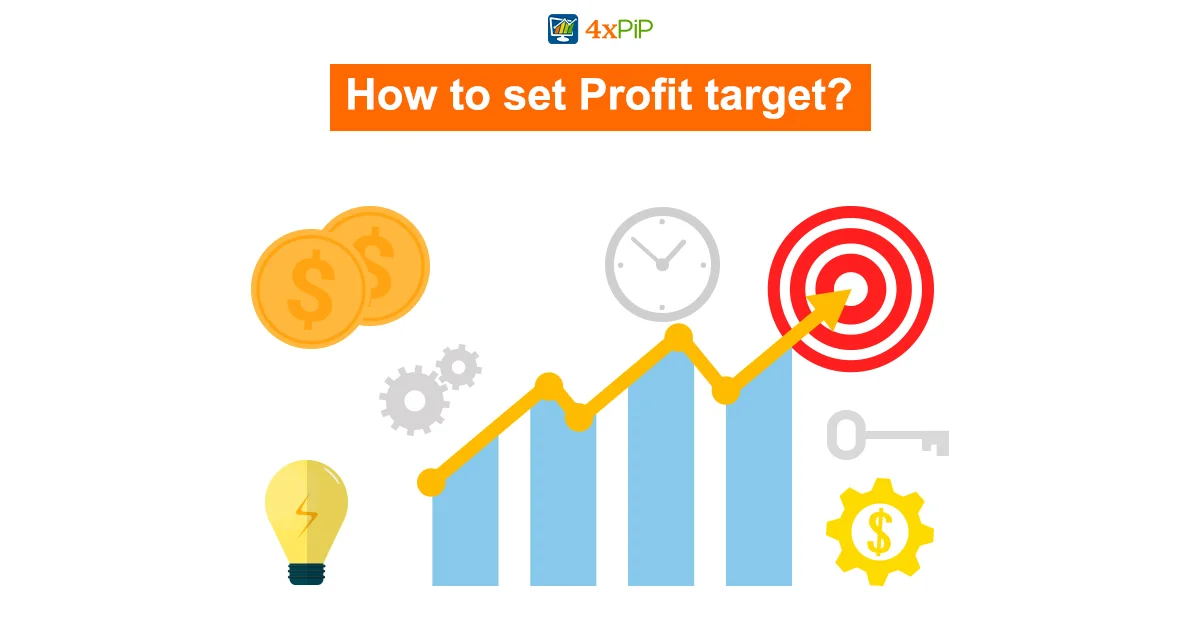Are you a day trader looking for the best exit strategies to secure profits? Look no further. In this article by 4xPip, we will explore proven techniques and strategies that can help you maximize your profit and minimize your losses. Whether you’re a seasoned trader or just starting, having a well-thought-out exit strategy is crucial for long-term success in the unpredictable trading world. Additionally, we will delve into the importance of technical analysis and the various indicators that can help you identify optimal exit points. Don’t leave your profits to chance. Stay tuned to 4xPip blogs for the latest trading news, strategies, and tips to help you stay ahead in the trading game. Remember, knowledge is power, and in trading, it can also mean profit.
What is a take profit (T/P) in trading?
A take profit is a predefined price level at which a trader sells or closes a position to realize a profit. A trader places a type of limit order to sell assets or security when its price reaches a certain level. Setting a take-profit level aims to lock in gains and avoid the risk of potential reversals in the market that could lead to a loss.
When a trader enters a position, they often set both a stop loss and a take profit order to manage their risk and reward ratio. A stop loss is designed to limit losses by automatically selling the asset or security if its price moves against the trader beyond a certain point. On the other hand, a take-profit order is set to secure profits by automatically selling the asset or security when its price reaches a predetermined level.
Take-profit orders are typically based on technical analysis, market conditions, and the trader’s risk tolerance and trading strategy. It’s essential for traders to carefully consider and set these levels before entering a trade to have a disciplined approach to risk management and to avoid emotional decision-making during periods of market volatility.
Why are profit targets important in Trade?

Entering a trade is easy, but when and where to get out from that Trade determines your profit and loss. Choosing the exit point before initiating a trade enables the calculation of a risk/reward ratio for that specific Trade. Equally vital to the profit target is the setting of a stop-loss. The stop-loss defines a trade’s potential loss, while the profit target establishes the potential profit. Ideally, the anticipated reward should surpass the associated risk. Utilizing a profit target in trading enables evaluating whether a trade is worthwhile. If the potential profit doesn’t justify the associated risk, avoiding taking the Trade is advisable. In essence, setting a profit target serves as a mechanism for screening and preventing poor trades.
Although we cannot predict the outcome of individual trades as winners or losers beforehand, across numerous trades, we stand a better chance of realizing an overall profit if our winning trades yield more profit than our losing trades. When in day trading forex and considering that our winning trades typically average 12 pips, with losing trades averaging 7 pips, achieving an overall profit becomes feasible with a win rate of approximately 40%.
How to set a Profit target?

Setting a profit target involves a delicate balance. It’s akin to a balancing act where you aim to maximize potential profits according to market trends. However, it’s essential not to succumb to greed, finding the sweet spot where the target is neither too close nor too distant, ensuring a realistic chance for the price to reach it.
Support and resistance form a potent framework in trading, allowing traders to analyze price movements. The concept revolves around the idea that prices often face challenges breaking above specific resistance levels or below certain support levels. This knowledge is valuable for determining profit levels in trades. In a long trade, targeting key resistance areas for setting profit targets is advisable. Conversely, in a short trade, targeting support areas is a strategic approach to taking profits. These levels signify points where the price struggles to breach and sometimes may even reverse direction.
Profitable Risk-To-Reward Ratio
Setting a profit target can be straightforward when employing a profitable reward-to-risk ratio, a simple yet effective strategy in trading. Determined by your entry point, this ratio is closely tied to your stop-loss level, which, in turn, dictates the amount at risk in the Trade. By maintaining a consistent reward-to-risk ratio, traders aim to create a disciplined approach to risk management and profit. Forex traders often engage in trades with risk-to-reward ratios of 1:2, 1:3, or higher. Nevertheless, profitability is still achievable even when operating with a risk-to-reward ratio as modest as 1:1.
For instance, consider a 1:2 risk-to-reward ratio. If you initiate a short trade at $18.25 and identify a stop-loss level at $18.35, the risk per share is $0.10. In adherence to a 2:1 reward-to-risk ratio, your profit target would be positioned at $0.20 from your entry point.
Profit Target Analysis By Market Tendency And Price Action

Profit target analysis is a crucial aspect of successful trading, and a comprehensive understanding of market tendencies and price action significantly contributes to the effectiveness of this analysis.
Market Tendency
Market tendency is the direction or inclination of a financial market’s price movements over a specific period. It reflects the prevailing trend among market participants and can be characterized by whether prices are generally rising (bullish), falling (bearish), or moving sideways (neutral). Traders and investors analyze market tendencies to make informed decisions about buying, selling, or holding assets or securities. Exploring the complexities of financial markets demands a keen eye for market tendencies. Profit target analysis, rooted in understanding these tendencies, is important for successful trading. By observing the prevailing direction of asset or security prices, traders can align strategies with market trends. Fundamental factors, such as indicators and technical analysis, including chart patterns, guide the identification of profit targets. Identifying support levels and resistance levels helps traders make informed decisions about profit targets.
Price Action
Profit target analysis through price action is a fundamental strategy that empowers traders to make informed decisions in financial markets. Traders gain insights into potential market reversal trends by price movements, candlestick patterns, and key support/resistance levels. This approach sidesteps reliance on indicators, fostering a deeper understanding of market moves (Bullish or bearish).
Advantages of take profit
- Provides a structured approach to risk management by locking in profits at predetermined levels.
- Automates the execution of take-profit orders, allowing traders to capitalize on favourable market movements without constant monitoring.
- It provides a sense of security and peace of mind for traders, knowing that a portion of profits is secured even if market conditions change.
- Allows for efficient use of trading capital by converting unrealized gains into realized profits.
Disadvantages of Take Profit
- Limits the potential for additional profits if the market continues to move in the trader’s favour beyond the predetermined take profit level.
- High volatility can lead to slippage, where the execution price differs from the expected take profit level, affecting overall profitability.
- Excessive focus on precise profit levels may lead to missed opportunities if the market approaches but does not reach the predetermined target.
- Using fixed-take profit levels may not always align with the potential of a trend extension, causing traders to exit prematurely.
Conclusion
The emphasis is on a well-convinced exit strategy, with the take-profit order as an exact shield against market reversals. This talk promotes stop-loss orders, risk/reward ratio calculations, and disciplined decision-making. It also stresses the need for a careful balance when realistically setting profit targets, taking support and resistance levels with you, and responding to market moves. Visit 4xPip to explore various resources and tools to enhance your trading experience. For guidance and details on trading tools, contact 4xPip’s customer support at [email protected]. Stay informed, stay ahead, and maximize your trading potential with 4xPip.





